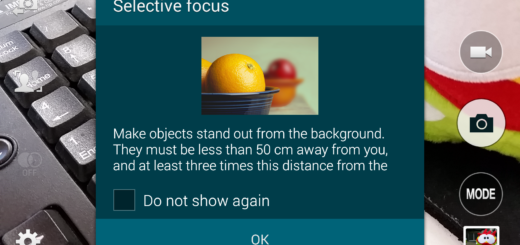Gaining Root Access: Everything you need to know
When trying to tweak your Android device, you will find yourselves in difficult situations, this especially if you are not used with custom or unofficial procedures. So, in order to help you out and for making your job easier, during the present guide, I will try to describe everything that’s related to the root aspect. So, after reading this tutorial you will be able to decide whether to gain root access or not, as the root operation is the first step to make when trying to improve, update, or power up the performances of your Android based smartphone / tablet.
But what most of the users who are applying root operations aren’t aware of is that the root aspect comes with both advantages and disadvantages, so before applying anything on your device do make sure that you know everything about the task you are about to complete.
Anyhow, first of all you should know what a rooted system really is, or what it means. Basically, the root access is being required when you need to obtain more from your Android powered device. Actually, by gaining root access you will unchain the internal system of your handset, which means that you will be able to change, remove and add new settings, apps and in-built programs.

Root – Everything About
That’s why, after rooting you will be able to install a custom recovery image (like CWM recovery which can be installed on any Android device), update with a custom ROM firmware, customize and optimize the performances, change the Android looks, the user interface and so on. In a few words, unchaining the system of your handset is a must have and not an option for those interested in upgrading the performances of their smartphones / tablets.
You should be careful as there are two different ways in which you can gain root access: we have the general methods that can be applied on any Android based devices and there are dedicated tutorials, developed by third party devs and suitable with only one phone / tablet model or version. Of course there are guides available for almost all the devices available on the market so you have nothing to worry about. Anyway, as a personal recommendation, you should follow and apply the dedicated step by step guides, which have been tested before; don’t choose to apply a method only because it sounds easy, as bad things might happen.
As already mentioned, there also negative aspects related to the root operation; so, do ensure that you check the following lines before applying something on your phone.
Gaining Root Access – Advantages
- The internal system will be unlocked – you will be able to access the same.
- The factory restrictions and default settings will be removed, your smartphone / tablet will be opened for changes.
- On a rooted device you can start the tweaking operations: install a custom recovery image, update with a custom ROM; in a few words powering up the performances.
- Also, on an unchained system you can install complex and powerful apps and tools that are requiring root access in order to work properly.
- By accessing the internal system you can remove in-built programs, optimize and customize the OS, so you can upgrade the battery life and improve the speeds.
Gaining Root Access – Negative Aspects
- As you can already tell, the root operation is not official; actually the same has nothing to do with Google.
- Therefore, you will perform an unofficial procedure that will change the default settings and factory restrictions that are installed on your Android based smartphone / tablet.
- That’s why, when gaining root access, the warranty of your device will get void.
- So, if you are somehow messing things up (by following a bad tutorial or by applying a root method that is not suitable with your handset) you can end up in bricking your device. In that case you will be by yourselves; there will be nobody to help you out.
- The warranty can be restored afterwards but only by downgrading to stock ROM, updating with an official release of the Android OS, or by un-rooting the system of your phone.
- Usually, unrooting the OS, or fixing a bricked device is a complex operation that can be hardly completed.
- Also, the root operation must be considered complex and risky – be careful when trying to apply the same and always read twice before applying something on your handset.
There you have it; now you know everything about the root access. So, use the comments area from below for sharing your impressions about this guide with us and with other users who might want to read a second opinion. Also, stay close as we will bring suitable root guides for your Android powered smartphone / tablet.












GooD super